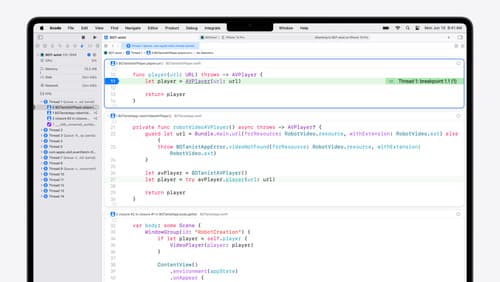What is structured concurrency
Asked on 2024-09-01
2 searches
Structured concurrency in Swift is a programming model that helps manage concurrent tasks in a more organized and predictable manner. It is designed to simplify the process of writing concurrent code by providing clear and structured ways to define and manage tasks, ensuring that they are executed in a safe and efficient manner.
In Swift, structured concurrency is achieved through features like async/await and actors. These features allow developers to write asynchronous code that is easy to read and maintain, while also providing mechanisms to avoid common concurrency issues such as data races.
The Swift concurrency model emphasizes data isolation and safety, using actors to protect mutable state and the Sendable protocol to ensure safe data sharing between concurrent tasks. With the introduction of Swift 6, data race safety is enforced by default, turning potential runtime issues into compile-time errors, which significantly improves the reliability and security of concurrent applications.
For more details on structured concurrency, you can refer to the session A Swift Tour: Explore Swift’s features and design (18:33).

A Swift Tour: Explore Swift’s features and design
Learn the essential features and design philosophy of the Swift programming language. We’ll explore how to model data, handle errors, use protocols, write concurrent code, and more while building up a Swift package that has a library, an HTTP server, and a command line client. Whether you’re just beginning your Swift journey or have been with us from the start, this talk will help you get the most out of the language.

What’s new in Xcode 16
Discover the latest productivity and performance improvements in Xcode 16. Learn about enhancements to code completion, diagnostics, and Xcode Previews. Find out more about updates in builds and explore improvements in debugging and Instruments.

Migrate your app to Swift 6
Experience Swift 6 migration in action as we update an existing sample app. Learn how to migrate incrementally, module by module, and how the compiler helps you identify code that’s at risk of data races. Discover different techniques for ensuring clear isolation boundaries and eliminating concurrent access to shared mutable state.
